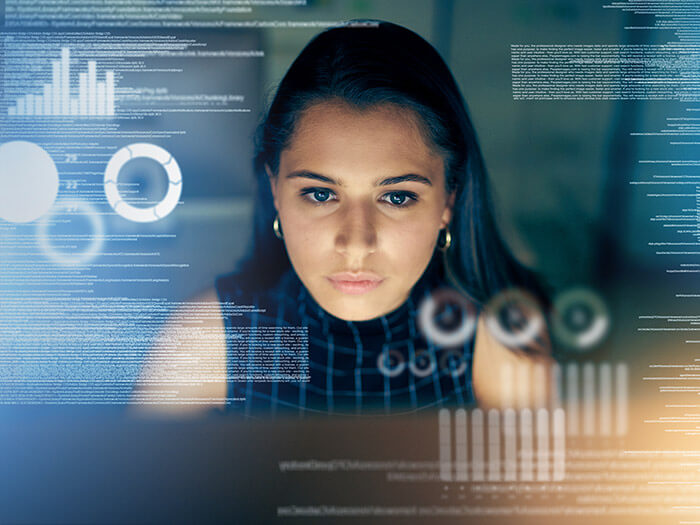
How automation can improve your audit quality—and speed up the process
 It’s possible to digitize aspects of the audit and gain efficiencies in automating audit procedures so that “audit bots” can perform repetitive tasks through robotic process automation (Getty Images/Cecilie_Arcurs)
It’s possible to digitize aspects of the audit and gain efficiencies in automating audit procedures so that “audit bots” can perform repetitive tasks through robotic process automation (Getty Images/Cecilie_Arcurs)
There’s been a lot of talk lately about how audits are being transformed by automation and artificial intelligence (AI). But what does that really mean in practical terms? And, if your firm has yet to embrace these new technologies, how do you get on board?
It’s important to realize that you don’t need to jump straight into using AI. As Yasmine Hakimpour, principal, audit and assurance in CPA Canada’s Research, Guidance and Support Group explains, you can first identify opportunities for using automation and analytics before moving into AI. “Implementing AI is a journey, not a one-step process,” she says.
As it happens, there are opportunities for using automation and analytics at every stage of the auditing process. Here are some examples, as outlined in a recent publication developed jointly by CPA Canada and the AICPA. (The publication covers opportunities for AI as well and we will look at those in a later article.)
PLANNING
Materiality and scoping: Robotic process automation (RPA) and analytics can be used for a wide range of tasks, including extracting data from prior periods or interim financial statements to determine proposed materiality based on a range of benchmarks. As CPA Andrew Kwong, partner, risk advisory at Deloitte Canada, explains, the same techniques can be used to determine materiality in a continuous or real-time audit.
“While materiality is an area where auditor judgment is critical, analytics can be used to support the assessment—for example, by providing comparative analysis and benchmarking for data points to consider in determining materiality,” he says.
Risk assessment: RPA can also be used to source information from subscription databases and publicly available information sources. As Kwong explains, this might include everything from extracting key financial metrics used in risk assessment to completing non-judgmental independence checks and gathering market data on clients.
“For example, risk assessment automation could highlight anomalies in the cadence of revenue, expenses or inventory movements,” he says.
Kwong adds that third-party data sources can also be used to automatically identify inconsistencies between those sources and the client’s data set. “In the real estate industry, , you could compare external data on monthly base rents and vacancies with the client’s data,” he says.
FIELDWORK
Automating procedures: It’s possible to digitize aspects of the audit and gain efficiencies in automating audit procedures so that “audit bots” can perform repetitive tasks through RPA. As Michael Hiley, CPA, partner, audit and assurance at BDO explains, at a basic level, RPA differs from AI in that it is not able to learn or make judgments, but it can still assist in both internal and external audits.
“It can be used to replicate some computer-based tasks,” he says. “Among other things, RPA bots can be used to compile and compare transactional data such as inventory moves to cost of goods sold transactions or copy data across different audit files, run calculations and rebuild financial statements from underlying data to form independent expectations of the financial statements for tie-out purposes.”
Expenses: Analytics can be used to explore expenses and identify anomalies.
Contract review: Optical character recognition (OCR), combined with other technology, can be used to extract terms from standard contracts to perform comparisons and ensure no changes have been made (or to compile and help evaluate the changes). “For example, revenue contracts across a period can be analyzed and compared to ensure terms are consistent, providing support to the audit team that they only need to analyze that single set of terms to conclude on the impacts of IFRS 15—Revenue from Contracts with Customers,” says Hiley. “Companies have also used similar processes to analyze their lease contracts to apply IFRS 16—Leases. Telecommunication companies with potentially thousands of leases have leveraged the tools to efficiently compile and analyze lease terms.”
REPORTING
Refresh of planning: The use of RPA, automation and AI tools enables the auditor to review and focus their time on issue resolution and closing down issues identified. As Deloitte Canada’s Kwong says, this can help to shorten the reporting cycle.
“Planning is initially based on numbers at a particular date and audit automation can make it possible to load year-end trial balance numbers along with proposed adjustments to come up with finalized numbers that are automatically compared with the analytic review that drove planning,” says Kwong. “This would identify issues that might need to be re-visited by the audit team.”
CHANGES AND OPPORTUNITIES
Once you’re familiar with using automation and analytics in your audit process, you’ll be well on your way to using AI, too. As Hakimpour reiterates, being able to effectively implement AI in your audits will not happen overnight. “It is a journey that begins with identifying opportunities for automation and analytics and evaluating lessons learned as you begin to implement AI. And, as you move through your journey, you’ll also begin to see new audit service opportunities open up.”
MOVING ALONG ON THE AI JOURNEY
CPA Canada has resources to accompany you on every step in your automation and AI journey. Watch a video on getting into the AI game and read A CPA’s guide to AI and Robotics process automation and beyond. In The Data-driven Audit you’ll find examples of how automation and AI can be used throughout your audits, as well as how the role of the auditor may change.
And if you’re looking to expand your knowledge to include more tech topics, such as blockchain and crypto-assets, data analytics and more, visit technology resources for CPAs.